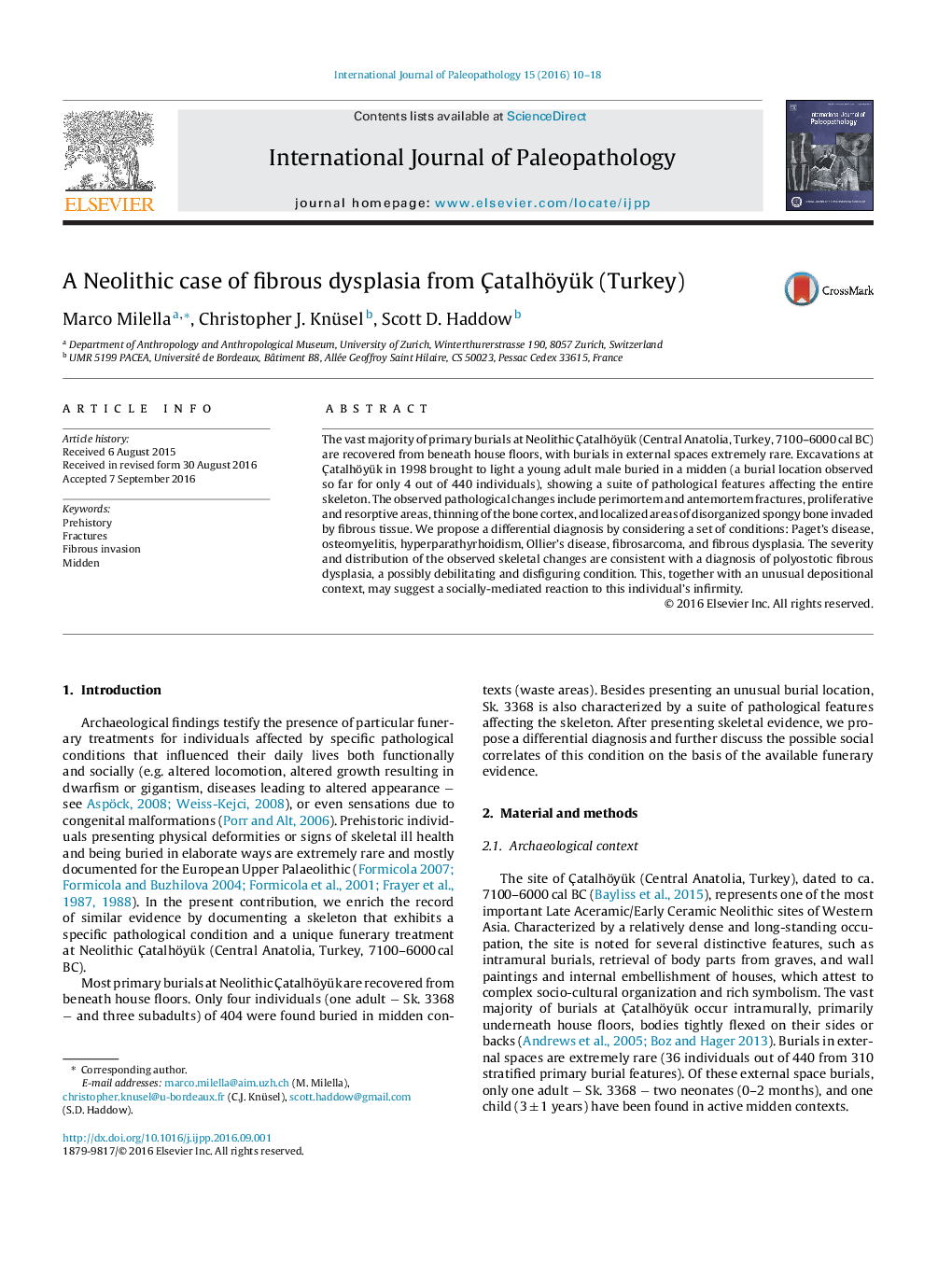| Article ID | Journal | Published Year | Pages | File Type |
|---|---|---|---|---|
| 4760578 | International Journal of Paleopathology | 2016 | 9 Pages |
Abstract
The vast majority of primary burials at Neolithic Ãatalhöyük (Central Anatolia, Turkey, 7100-6000Â cal BC) are recovered from beneath house floors, with burials in external spaces extremely rare. Excavations at Ãatalhöyük in 1998 brought to light a young adult male buried in a midden (a burial location observed so far for only 4 out of 440 individuals), showing a suite of pathological features affecting the entire skeleton. The observed pathological changes include perimortem and antemortem fractures, proliferative and resorptive areas, thinning of the bone cortex, and localized areas of disorganized spongy bone invaded by fibrous tissue. We propose a differential diagnosis by considering a set of conditions: Paget's disease, osteomyelitis, hyperparathyrhoidism, Ollier's disease, fibrosarcoma, and fibrous dysplasia. The severity and distribution of the observed skeletal changes are consistent with a diagnosis of polyostotic fibrous dysplasia, a possibly debilitating and disfiguring condition. This, together with an unusual depositional context, may suggest a socially-mediated reaction to this individual's infirmity.
Keywords
Related Topics
Life Sciences
Biochemistry, Genetics and Molecular Biology
Physiology
Authors
Marco Milella, Christopher J. Knüsel, Scott D. Haddow,
